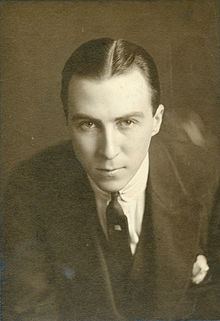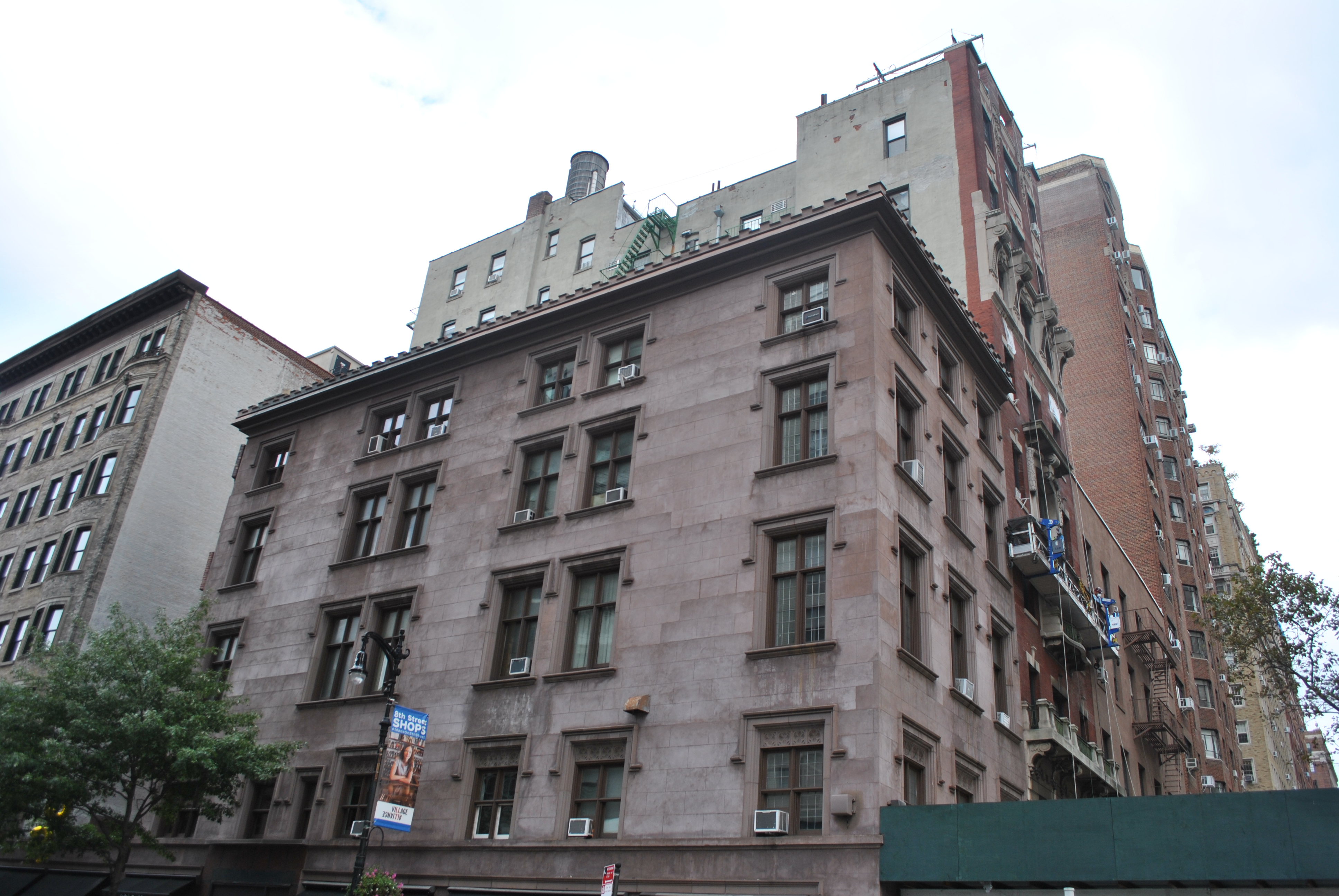Partner Billy Ladd
Queer Places:
142 W 44th St, New York, NY 10036
10 5th Ave, New York, NY 10011
 Hubert
Edward Hassard Short (1877–1956), usually known as Hassard Short, was an
actor, stage director, set designer and lighting designer in musical theatre[2]
who directed over 50 Broadway and West End shows between 1920 and 1953.[3][4]
Theatre historian Ken Bloom called him "one of Broadway's greatest directors
and lighting designers",[5]
while theatre writer John Kenrick described him as a "groundbreaking director
and choreographer".[6]
Hubert
Edward Hassard Short (1877–1956), usually known as Hassard Short, was an
actor, stage director, set designer and lighting designer in musical theatre[2]
who directed over 50 Broadway and West End shows between 1920 and 1953.[3][4]
Theatre historian Ken Bloom called him "one of Broadway's greatest directors
and lighting designers",[5]
while theatre writer John Kenrick described him as a "groundbreaking director
and choreographer".[6]
After 25 years acting on stage and in films, Short turned to directing and
designing in 1920. He made many innovations in stage lighting and design,
including the first permanent lighting bridge (Music Box Revue, 1921)
and first the use of a revolving stage in a Broadway musical (The Band
Wagon, 1931).[3][7]
He continued to direct until 1952.
Short was born in Edlington, Lincolnshire into the English landed gentry,
the elder son of Edward Hassard Short and Geraldine Rachel Blagrave.[8]
He left school aged fifteen to seek a career on the stage.[9]
He made his first acting appearance in London in 1895 before being brought to
New York City by producer Charles Frohman in 1901, where he continued to
appear on stage until 1919.[10][11]
He also acted in five silent films between 1917 and 1921, the last being
Woman's Place.[1]
Short's first experience of directing was the 1908 hit Broadway play The
Man from Home.[9]
Alongside his acting work, he directed The Lambs Club Gambols, annual benefit productions, from 1911 to
1913.[9][11]
During the 1919 Actors' Equity Association strike he staged a series of four
all-star fundraising shows, which were so well received[11]
that he decided his future lay in directing and stagecraft; a small
advertisement in The New York Times in July 1920 announced "his
intention of becoming a vaudeville impresario on a large scale", as well as
his appointment by producer Joseph Weber as director of the operetta
Honeydeww.[12]
In this production an electrician operated overhead spotlights above the stage
from a bosun's chair, the first of Short's many innovations in stage lighting.[3]

10 5th Ave
His first major hits as a stage director came with the series of Music
Box Revues from 1921–23, which showcased Irving Berlin's songs.[1]
As well as innovative lighting, he included mechanical effects such as moving
stages and elevators, though these were not received with universal approval:
the critic Gilbert Seldes complained that "Hassard Short, confusing the
dynamics of the theatre with mere hoisting power, moves everything that can be
moved except the audience."[13]
In 1921 he staged a historic Shakespearean pageant with many of Broadway's
leading men and women in a fundraiser for Actor's Equity.[14]
Short adapted well to the more limited budgets of the 1930s by staging
revues, including many collaborations with producer Max Gordon and
choreographer Albertina Rasch.[4]
In Three's a Crowd (1930), he dispensed with footlights for the first
time on the New York stage by attaching lights to the balcony railing.[15]
He staged the groundbreaking 1931 revue The Band Wagon on double
revolving turntables, allowing rapid scene changes.[6]
His opulent staging of The Great Waltz (1934), financed by John D.
Rockefeller, was an exception to the tightened purse-strings of the time and
confounded many critics by becoming a hit in both New York and London.[2][6]
His wartime hits included Lady in the Dark (1941), Something for
the Boys (1943) and Carmen Jones (1943), for which he won the first
Donaldson Award for best musical direction.[16]
Short continued to work into his seventies: he staged a successful revival of
Show Boat in 1948, and the last show he worked on was My Darlin'
Aida, which opened in 1952.[2][4][10]
A homosexual in a closeted era, Short enjoyed a long-lasting relationship
with Billy Ladd (real name Billy
Strongman), a former chorus dancer.[2][11]
Already in 1935 they are reported as living together.
Short retired to the South of France in 1952, and died there in 1956.[11]
Short's will named a William B. Strahlman, Jr, as sole beneficiary, but there
were no survivors.
My published books:


BACK TO HOME PAGE

- https://en.wikipedia.org/wiki/Hassard_Short
 Hubert
Edward Hassard Short (1877–1956), usually known as Hassard Short, was an
actor, stage director, set designer and lighting designer in musical theatre[2]
who directed over 50 Broadway and West End shows between 1920 and 1953.[3][4]
Theatre historian Ken Bloom called him "one of Broadway's greatest directors
and lighting designers",[5]
while theatre writer John Kenrick described him as a "groundbreaking director
and choreographer".[6]
Hubert
Edward Hassard Short (1877–1956), usually known as Hassard Short, was an
actor, stage director, set designer and lighting designer in musical theatre[2]
who directed over 50 Broadway and West End shows between 1920 and 1953.[3][4]
Theatre historian Ken Bloom called him "one of Broadway's greatest directors
and lighting designers",[5]
while theatre writer John Kenrick described him as a "groundbreaking director
and choreographer".[6]


